It’s no secret that Cricket is a batsman’s game. Flat pitches, short boundaries, broad bats, fielding restrictions are all equally responsible for this tilt in balance towards the batsmen. With the advent of T20 cricket, the bowlers have been made to suffer even more. All the spectators want to see are fours and sixes.However, there are some bowlers who manage to attract crowds, who manage to steal the limelight. Bowlers such as Brett Lee, Shoaib Akhtar, Shane Warne, Lasith Malinga. Crowds come to watch them bowl. They come to see them torture hapless batsmen. They come because they see stumps flying, they see balls turning square, they come because it’s beautiful, they come because these bowlers’ skill appeals to their eyes. That’s why these bowlers are so well known, so popular. There are some others who are not so popular. Not many people know about them. They are not the lead bowlers of their team. They are like the side heroes in a movie. The bowling line up, much like the movie, is never complete without them, but it’s the lead bowlers who everyone knows about, who everyone gives the credit to.But this support cast is of as much importance. It’s another matter that they’re not given enough credit.
#5 Simon Jones
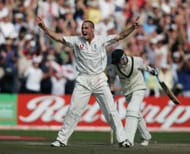
Simon Jones is best remembered for his never ending spate of injuries. He had knee reconstructions, fragile hamstrings, a bad back and what not. It meant Simon Jones just played 18 Tests, when he should have played at least 75. Being one of the most talented bowlers England had ever produced was not enough, for he never had that rub of green going his way.
He fractured his knee on his Test debut, he was that unlucky. For most of his career, Simon Jones was out injured. But there was a two year period from 2003 to 2005, where Jones, against all odds, kept himself fit. And that period included the 2005 Ashes, arguably the best test series ever played. England won the Ashes after 25 years that year. The celebrations that followed the victory were something the world of sport had rarely seen.
It was England’s bowling that had won them the Ashes. It was Andrew Flintoff who was leading their attack. He was magnificent, brilliant, unreal, supreme and all other praise worthy adjectives that can be found in a dictionary. Muck like Ian Botham in 1981, the Ashes of 2005 were known as Flintoff’s Ashes. He stole all the limelight, like he always had. Steve Harmison and Matthew Hoggard also got some of that limelight. Harmison, because he took that last wicket in Old Trafford and Hoggard, well because he is Hoggard.
Simon Jones didn’t hog the limelight, he didn’t get too much credit. He should have, for he deserved every bit of it. One of the most iconic images from that Ashes is Michael Clarke, bowled shouldering arms to a reverse swinging ball. Few know that it was Simon Jones who bowled it. They just presume it was Flintoff who bowled it.
Jones was just a notch below Flintoff in that series, he dried one end up, he bowled long spells when Flintoff and Harmison were rested, he broke important partnerships, he introduced that fear of reverse swing in the Australians’ mind. He did much more than he was asked to, much more than he was expected to. But he never got any credit. The fourth Test at Trent Bridge turned out to be his last. His knees, they never let him play again.
While his short career 18 Test career and his bowling statistics are nothing out of the ordinary, Jones was special and he was never given enough credit for that. People say that it was just that one series in which he bowled exceptionally. They tend to forget that it was the probably the most important, most emotional, most talked about series in modern cricket.
And it takes something quite exceptional to perform when the stakes are so high and when your body doesn’t support you. Simon Jones, for that one series, for just those four Tests, mustered that something from within him. He fought against his body, he fought against odds and he played a central role in helping England win what was his last series as an international cricketer.
He deserves to be given more credit because of the smiles he helped bring to the face of the English people, because he helped rebuild their faith in English cricket and because he played a central role in telling the world that Australia can be beaten. In each of the 18 Tests he played, he really gave it more than his all. For that spirit as much as his bowling, he deserves more credit. Simon Jones really does.
#4 Paul Harris
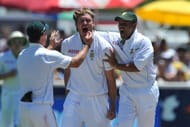
When we talk about South African spinners, the names that come up in our minds are Paul Adams, Nicky Boje and Imran Tahir. The name Paul Harris isn’t too popular, not many recall him. The few of them who do, only remember the fact that his left arm spin was boring, that he was defensive, that he bowled a negative line from over the stumps. He wasn’t liked too much.
Paul Harris played 37 Tests, in a four year period ranging between India’s tour to South Africa in 2006-07 until their next one in 2010-11. Harris played his last few matches waiting to be dropped, for all the selectors were talking about was the qualification of Pakistan-born leg spinner Imran Tahir. So, as soon as Tahir got South African citizenship, Harris was dispensed with.
Tahir’s Test bowling wasn’t anywhere as good as it was expected to be. He conceded a lot of runs, he didn’t take wickets either. His aggression, his always going for wickets kind of bowling didn’t complement the South African pace attack. They couldn’t maintain the hold they had on opposition batsmen earlier. Once the fast bowlers got tired, and the ball got old, they were leaking runs by the dozen. A link was missing. That link was Paul Harris. It was only after he retired that people realised his value, that people realised the importance of the role he was playing in the team.
Spin bowling has never been given major importance in South African cricket. It’s been all batsmen and fast bowlers. Since their reintegration in 1991, only three spinners have taken more than hundred test wickets. Paul Adams, the much loved chinaman bowler with a weird action. Nicky Boje, supposed to be a special talent. And Paul Harris, an ordinary unloved nothing sort of bowler.
Dale Steyn is a great fast bowler. He takes a lot of wickets. But he requires someone to support him from the other end, to maintain that pressure on batsmen, to not get their confidence up. He has Morne Morkel and Vernon Philander doing it for him now. When Harris started, Steyn was still a young bloke. He was still learning the tricks of the trade. He certainly required someone to support him. Morkel was young and erattic. Makhaya Ntini and Andre Nel, more after wickets than stopping runs. Shaun Pollock was there, but only for a short while.
In such circumstances, it was Harris who became the perfect foil to Steyn’s aggression. It was Harris who kept batsmen in check while Steyn went all guns blazing at them from the other end. Harris did that for each of the 37 Tests he played. He helped South Africa to numerous victories, even though 103 Test wickets don’t prove it.
He became what he became because South Africa wanted that, because South Africa needed that. And in the end, he walked away without any acknowledgement for any of it. Even a little bit would have been enough for him.
#3 Ishant Sharma
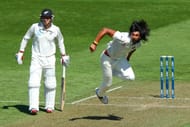
There are few players in world cricket right now who are trolled as much as Ishant Sharma is. It’s quite strange to be honest. When he started off against Australia in 2007-08, he was India’s heartthrob. Praise and love was all people had for him as he made a mockery of Ricky Ponting’s defence down under. He continued in the same vein for a year, before his form and eventually his speed started tailing off.
The honeymoon period was over. Ishant stopped taking wickets. He stopped getting the love he used to. He got to know how fickle the fans are. He got to know how tough it is to be an international cricketer.
Unlike the others in this list, Ishant had a fair share of limelight, but always for non-performance. No matter how hard he tried, how well he bowled, people always found faults with him. That early impressive burst had set unrealistic expectations. He was never that good. It was just an extended period of great form. But those expectations, of being India’s next big fast bowling hope, they didn’t vanish. So, whatever he did after that, people never gave him enough credit.
Ishant Sharma has bowled very well in partnerships, earlier with Zaheer Khan and now with Ravichandran Ashwin. He doesn’t take wickets, but he creates chances (which are almost never taken), he makes the batsmen make mistakes, he dents their confidence. He rarely gets the wickets, though. He is unlucky, very, absolutely, definitely. Plain and simple.
Ishant is just 26 and he has played 64 Test matches. That is quite an achievement for a fast bowler. While 192 wickets at an average of 37 is pretty mediocre, these figures don’t reflect the entire story. That of dropped catches, half chances, flat wickets, old balls, defensive fields and long spells.
At Lords 2014, Ishant Sharma had luck going his way, he was on fire. He bounced England out during his matchwinning seven wicket display in the second innings. That was one victory, one performance for which he was given full credit. People failed to notice that it was the one rare occasion where he was used as the main strike bowler.
Ashwin was not playing and Bhuvneshwar Kumar was exhausted beyond limits. Ishant was given credit because that day he was the hero, not the supporting cast. When he’s not a hero, that credit doesn’t seem to be given to him. But he’s not the hero, it’s only when the others go missing that he will be. Supporting the hero is his role in the team. That shouldn’t take anything away from him. His role is just as important.
#2 Peter Siddle
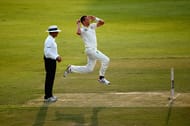
In 2008 at the PCA stadium in Mohali, a fast bowler made his debut for Australia. He had a muscular build, a strong action, and high pace. He was a proper Australian fast bowler then. 57 Tests and 198 wickets later, he is not who you call a typical Australian fast bowler. He’s more military medium. But he’s solid, he’s good and he has served Australia very well. He is Peter Siddle.
Australia is a land of machoism. It reflects in their cricket. The way they sledge, the way their batsmen go about smashing opposition bowlers into orbit, the way their fast bowlers send stumps cartwheeling. Every aspiring cricketer wants to fit that description. Every aspiring batsman wants to bat like Ricky Ponting and Matthew Hayden. Every aspiring fast bowler wants to bowl like Dennis Lillee and Brett Lee. Siddle also set out to do that, but things turned out to be different.
Australia were under a period of transition when Siddle was cementing his place in the team. Alongside him were bowlers like Mitchell Johnson, unreliable and extreme. Siddle was consistent, he was reliable. He was what Australia needed at that time. A bowler who blocks one end up while bowlers like Johnson and Ben Hilfenhaus attack from the other.
Siddle did exactly what he was asked to. He became boring. He didn’t take the number of wickets he used to. His job was to build pressure. He did that extremely well. An economy rate of under three proves it. He helped the lead bowlers take wickets. He bowled when nobody else wanted to, he bowled whenever a partnership needed to be broken. He bowled when the lead bowlers were tired. He bowled all the time. But he never got any appreciation. One bad match against India in late 2014 and he was dropped, for nine Test matches. He only played the dead rubber against England at the Oval this week.
Siddle never headlined the Australian attack. Opposition teams never talked of him too much. He was not given much importance by anyone. The spectators, the opposition teams, no one. It was all reserved for people like Mitchell Johnson and Mitchell Starc. Siddle can never take the world by storm the way Johnson did in the 2013-14 Ashes or as Starc as is doing in ODI’s currently. But what Siddle can do, he is doing without an iota of selfishness. He’s doing it for Australia. He deserves some credit for it.
#1 Ajit Agarkar
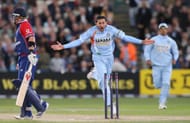
Ajit Agarkar is famous for four things. Being called Bombay Duck after his seven consecutive ducks against Australia, hitting a seventeen ball ODI half century against Zimbabwe, hitting a Test century at Lords, and his six wicket haul in the Adelaide Test of 2003 which India won. Out of these four, only one is related to bowling, his primary suit. Even then this bowling performance came in Test Cricket, a format where he wasn’t too successful, where he didn’t play much.
It was in ODI cricket that Agarkar was at his best. When you tell someone that he has almost 300 ODI wickets, the most common response is shock followed by a “You’re kidding, right?”. It’s not wrong to blame the people for such a response. Nobody noticed when he took so many wickets, nobody did. It’s hard to remember even one defining performance of his. The kind which stays with people, which defines your career. Like Ashish Nehra’s 6-23 in the 2003 World Cup.
Agarkar didn’t have any such performance, but he kept plugging away each match. Taking a couple of wickets here, a couple there. He was dropped for a two-year period between 2004 and 2006 without any reason. He was still taking wickets, but nobody noticed. He was never the star.
There was Javagal Srinath, there was Zaheer Khan, there was Irfan Pathan and then Zaheer again. These guys grabbed the headlines, Agarkar just did his job. And he did it well. 288 wickets stands testimony to that fact. He shouldn’t be remembered as the ‘Bombay Duck’. He should be remembered as one of India’s finest ODI bowlers.
Check RCB Squad 2024 Details. Follow Sportskeeda for IPL 2024 Live Score, Schedule, Points Table
